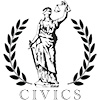| « Cook County Court Halts 1,700 Foreclosures | How to Help Save Homeless Services » |
Race Fri Apr 08 2011
Ted McClelland on the Segregated City
GB has already cited this great story by Ward Room's Ted McClelland, but I would like to give it a little longer treatment because it's so well written and speaks to an issue that we generally, for some reason, just tacitly accept: that Chicago, heart of the bluest of the blue counties in the country, is deeply segregated. In fact, the third most segregated city, by the Census' count.
McClelland, working for the Census, found some hope while working in Rogers Park. Head over to Salon and read the whole thing; here's just a taste:
Chicago's famed racial segregation goes back nearly a century. When blacks arrived here from Mississippi and Alabama to build weapons for the World War I doughboys, they were forced to live in a narrow strip of land known as the Black Belt. The ghetto finally burst open in the 1950s and '60s, consuming most of the South and West sides, despite Mayor Richard J. Daley's efforts to hold back the tide by crowding blacks into housing projects and walling off their neighborhoods with highways. The city is roughly a third white, a third black and a third Hispanic, but most Chicagoans live in neighborhoods no more diverse than Ireland, Nigeria or Mexico. In some places, you can drive under a viaduct and see the world turn a different color. Chicago's greatest monument to segregation is a 12-foot-tall berm that carries the Burlington Northern Railroad through the Southwest Side. It separates Lawndale, a once-Jewish neighborhood that "turned" in the 1950s, from Little Village, an old Eastern European neighborhood that is now Hispanic. The Poles and Ukrainians established the tracks as a racial barrier, especially after Lawndale went up in flames following Martin Luther King Jr.'s assassination. The custom has persisted with the new residents: South of the tracks, it's 97 percent Hispanic; on the other side of the tracks, it's 89 percent black.











